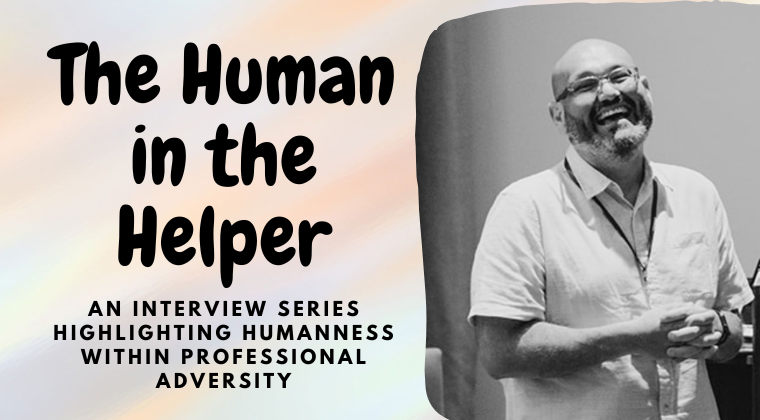Dr. Kendal Wellington Humes is a trailblazer. As a doctorate-level psychotherapist in private practice, he’s recently taken on the task of building a behavioral health program from the ground up in academia, as it’s first department chair. He’s had a busy few years, however they haven’t been without challenges. “I’m winning and I’m losing irreplaceable things.” In the past 8 years in Colorado, Dr. Kendal has experienced the loss of a parent, godparent, pet loss, and two painful divorces. “My private practice has kept me alive,” he shared.
“People see my progress but not my process,” Dr. Kendal reflected. He’s no stranger to wanting to excel since he’s achieved four degrees and multiple letters after his name before his mid-thirties. Educational and career achievements provided him a sense of purpose and control when his personal life felt rocky. “No one can take that from me,” he reflected.
Dr. Kendal named the pressure he feels to succeed. “I can’t afford to be mediocre. I’m Black. I’m an immigrant. I’m tall. I’m dark-skinned. And I’m openly gay. I don’t have the privilege of being mediocre.” He’s achieved quite a bit in his career so far, working in community mental health, offering supervision, starting a private practice, and now working in academia. He spoke of the bittersweetness of achieving success while grieving. “People are celebrating the successes but not the losses. Transparency can be weaponized.” Dr. Kendal also spoke to the pressure mental health professionals feel to have things all figured out. “We get the message that we should know better. We should be better.” As a mentor to younger generations of therapists and professionals, It hasn’t stopped him from sharing the hardships as well as the victories.
“I’ve been through divorce. My father died.” Dr. Kendal has experienced depression and he’s felt immense grief. “I didn’t feel like I could give people an honest answer about how I was doing. People don’t always understand what sacrifices have to be made for the successes they see.” Dr. Kendal also recognizes he’s hardest on himself. When experiencing divorce, he found himself saying, “I can’t even heal my own person. I can’t heal my own shit.”
Now Dr. Kendal is all about seeing both sides. “I can see the good and the bad. You cannot heal what you don’t reveal.” He describes his approach as strengths-based and holds onto some humor, even when things get heavy. “I have a strong sense of self. I had to forgive myself.” Dr. Kendal has similar ideas for others going through immense pain in their personal life. “Keep moving. Fall on your back instead of your face. When you fall on your back, you can still see what direction you need to go.”
As for himself, Dr. Kendal’s purpose has become clearer thanks to added perspective and deeper insight from the losses he’s experienced. “Sometimes letting go will put you right where you need to be. Stop fighting.” He’s attempting to take the changes in stride, knowing he has more people to meet and engage in his journey as a psychotherapist. “I’m a wounded healer,” he named. “Failures can be a win too. How will failures help us grow?”
Things happen to us as humans, even as we support our clients as professional helpers. Do you have a story you want to share the mental health community? Email us at croswaitecounselingpllc@gmail.com to learn more about the Human in the Helper Series!











